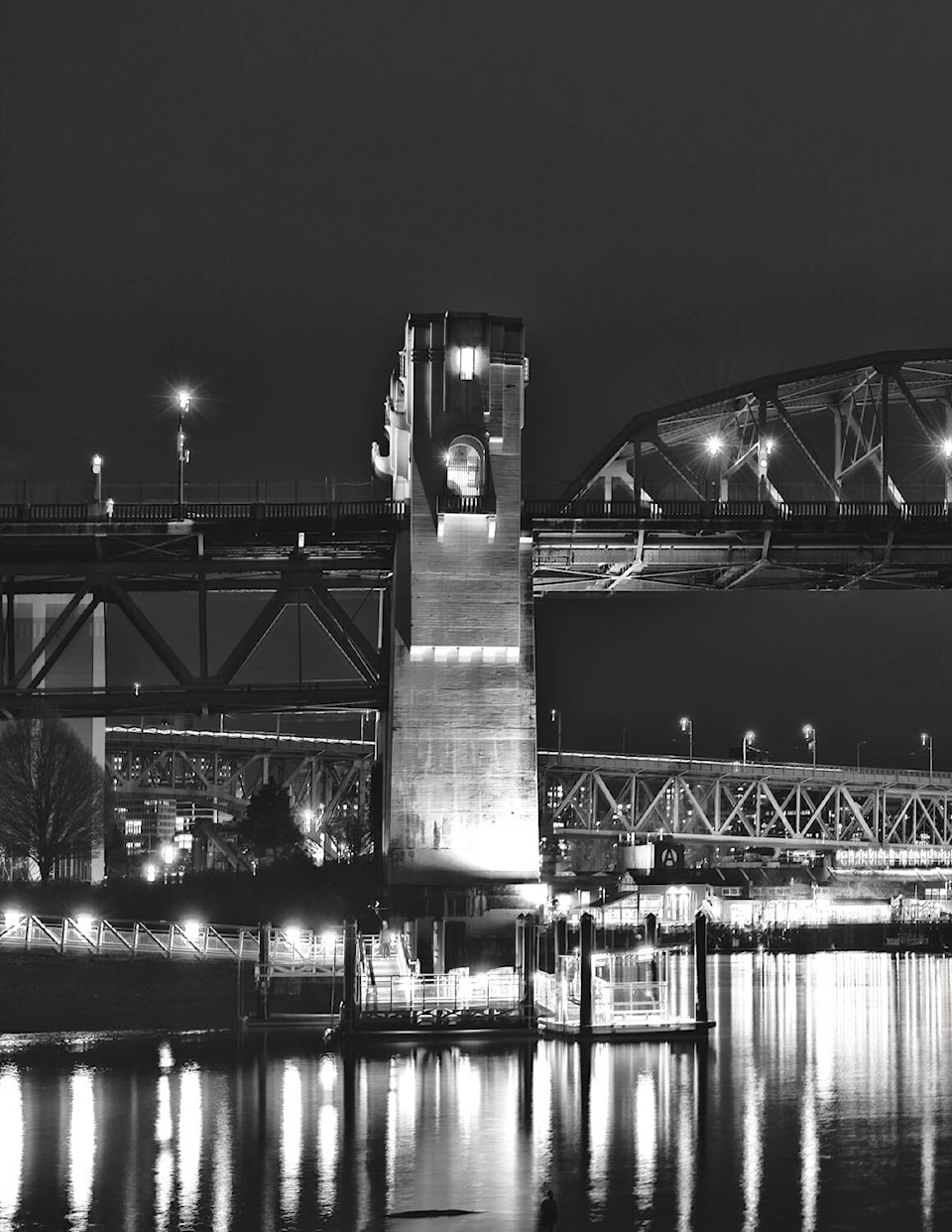This past week I was looking for a city night scene photograph. I like making architectural photos and I especially enjoy photographing the sparkling lights one sees in a large city.
The photographed scene had good composition and the angle of view was interesting. “But”…Gosh why did there have to be a “but”? The photograph lacked contrast and when I enlarged it on my screen the image wasn’t sharp.
I suppose modern photographers have gotten used to dialing their cameras ISO way up so they can quickly make hand held pictures that seem just fine when viewed on a small computer or a little iPhone display.
I liked the photographer’s photo and if the low contrast hadn’t bothered me I would have quickly browsed. However, the lack of contrast of the night sky behind the buildings detracted from an otherwise good photo that will be just fine unless someone wants to make it a wall print.
Last May my friend Jo McAvany and I attended the annual Vancouver used camera sale. We also photographed some locations in the city when the sun went down in the evening, and then before it came up in the morning.
We both carried tripods, and regarding what ISO I dialed in I sometimes change my exposure depending on the subject’s lighting and that might include changing my ISO.
I always have my camera set to RAW. RAW allows me to bring out details that might be hard to see and apply selective sharpening when doing night photos. I might sharpen and add contrast to the night clouds, to the reflection of lights in the water and to the subdued features of buildings. I usually crop my images on my computer and move the crop to select the most interesting composition.
I like using a tripod not only because it slows me down and forces me to think about the picture, but because it allows me to use slower shutter speeds. I know increasing the ISO a bit doesn’t bother most modern cameras. Nevertheless, a lower ISO will increase dynamic range. Dynamic range is the difference between the darkest and brightest color tones that a camera can capture.
Our cameras do just fine at 400 ISO to 1600 plus. A camera will get the highest quality images at it’s base ISO and for that reason I will choose a lower ISO in any situation I can. Of course, I’ll need a tripod.
For those that are really dedicated to the fabulous and exciting hobby of photography my advice with low light cityscapes is to use a tripod, maybe try a low shutterspeed, don’t dial up the ISO too much, search out a photography software program that fits your budget so you can shoot RAW and finally go out just as the sun begins to fade when the building lights go on and make lots of pictures.
Stay safe and be creative. These are my thoughts for this week. Contact me at www.enmanscamera.com or emcam@telus.net
_______________
Like us on Facebook
